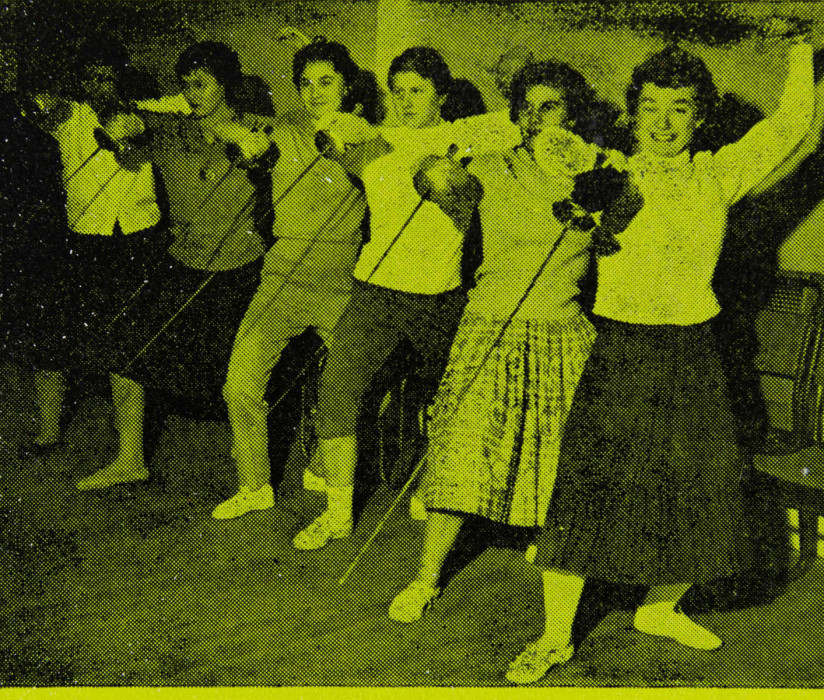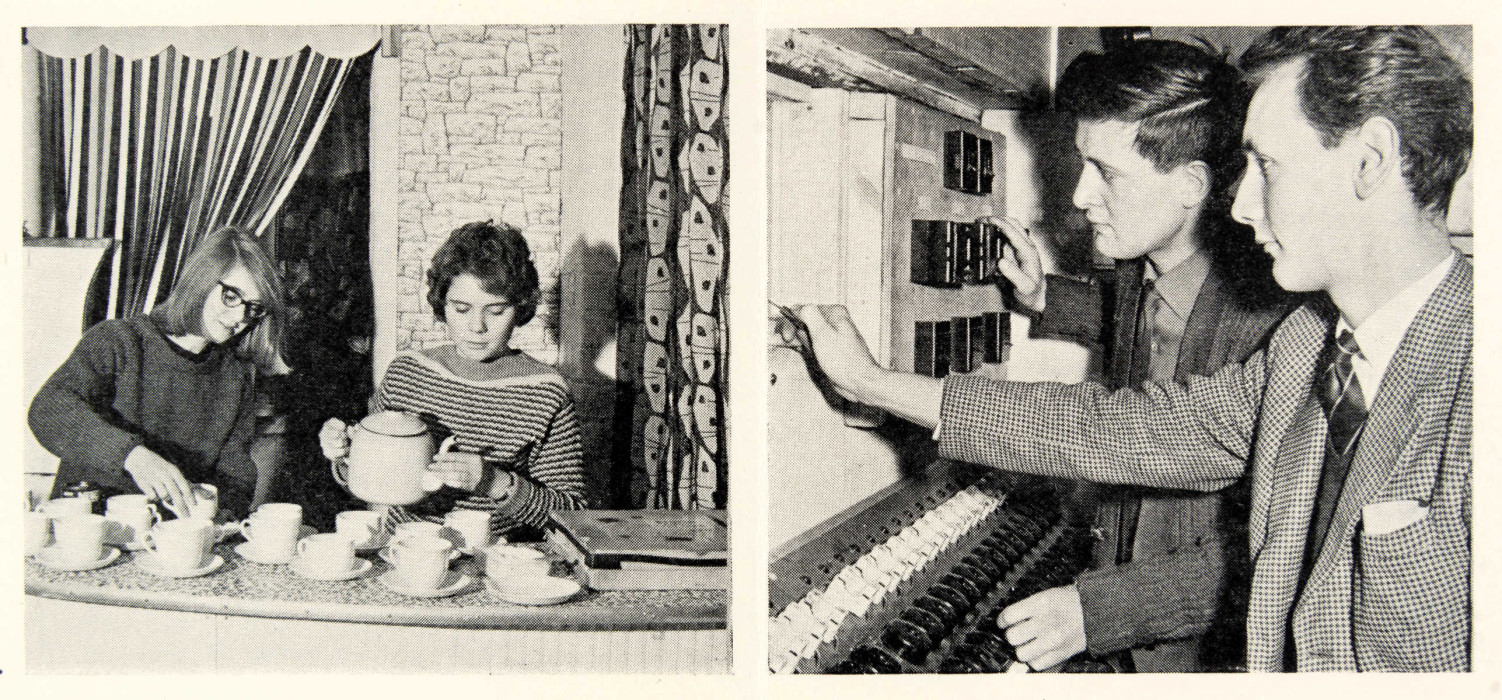Keeping girls off the streets: The Central Club
We are pleased to announce that we have catalogued the records of Reading Central Youth Club, 1914-1974 (D/EX568). The club was founded in 1914 as Reading Central Club for Girls, and was intended to cater for ‘girls who at present seek their recreation on the streets' initially in Bridge Street. It was aimed at working girls over 14 who had left school and were in or seeking work, although a branch later opened for younger girls. In 1917 the club moved to 29 Chain Street (off Broad Street), where it would stay until the 1970s. It provided a mix of entertainment and social activities, including arts and craft activities, sport and exercise, and religious, educational and domestic classes. Baths were available by arrangement for those whose homes or lodgings lacked running water. For a story of thwarted romance from the Club records, see our June highlight.

The Second World War brought many changes, with activities including boys for the first time in 1943. An Evacuated Mothers & Children's Club was based in the Hall in Chain Street, and the building also served as the headquarters for firewatching by women, providing them with safe overnight accommodation for their shifts. By the end of the war the club was wholly mixed and it was renamed the Central Club. A 'Housewives' group for young married women was held one afternoon a week from 1944, and was renamed the Women's Section in 1946. The club appears to have closed at some point between 1948 and 1958, but it got a new lease on life in 1959 when Reading Youth Committee, a subsidiary of the Reading Education Committee, restarted the club in the old premises.
The new Central Club was a centre for education and recreation for young people aged 15-21 in a period when youth culture was expanding. Members joined one or more of a range of individual activity groups, including filmmaking, drama, mountaineering, sailing, canoeing, music (including the Reading Youth Orchestra), art and sport. Some activities took place offsite such as boating and other outdoor activities, plus there was a theatre in South Street for the Theatre Workshop. Membership of one or more of these ‘Interest Groups’ automatically made young people members or associate members of the Central Club as a whole.

A coffee bar was set up in the building, also serving soft drinks, and there were general social events and film showings there. Group holidays organised by the Holidays Club gave many local youngsters their first experience of overseas travel, and included a trip in 1960 to attend the Olympic Games in Rome. The Club was also involved with International Youth Fortnights, welcoming groups and individuals from abroad. It flourished in this format until the lease ran out on the premises in the 1970s.
Social service in a historic house: Watlington House
We are pleased to report that we have catalogued the records of the Watlington House Trust, 19C-2012 (D/QX27), an slightly unusual charity which combines the preservation of a historic building with subsidised accommodation for other non-profit organisations.
Watlington House in Reading was built in 1688 by Samuel Watlington, a wealthy clothier who was twice mayor of the town. It is Grade II* listed, and widely regarded as the most architecturally important domestic building in Reading. In the early 19th century (prior to 1820) it was a private school for girls, and in the 1870s it was used briefly as the Town Clerk's office while the municipal buildings were being altered. Between 1877 and 1927 the house formed the premises for Kendrick Girls' School. In 1929 Reading Borough Council decided to sell the then-empty building, and in order to save the house from threatened demolition, a voluntary committee was formed by local architect C B Willcocks to raise funds to buy and restore it. Ownership was vested in the National Council of Social Service and it was placed in a trust which included a requirement for the Society for the Protection of Ancient Buildings to inspect its condition regularly.

The trust decided to put the building to use, and in 1931 it was opened as a Social Service Centre for Reading and district, providing premises for subsidised rent by various local charities and other organisations. One, the Berkshire Federation of Women's Institutes, which had its HQ there until 1988, was responsible for the laying out of the gardens in 1951 as part of the Festival of Britain. The Mills Archive Trust is now the principal tenant. The Garden Room, a small out-building erected by Kendrick School in the 1920s, was at one time used to provide classes in first aid and physical exercises for persons with learning difficulties, and in 2021 it was a Covid-19 vaccination hub for south and central Reading.
'Un-peopled, empty and dangerous at night': the Methodist view
Newly arrived material from Reading and Silchester Methodist Circuit, 1930-2014 (D/MC6) includes a comment from Wesley Methodist Church in c.1989-1990 describing Reading town centre as 'un-peopled, empty and dangerous at night'. We have also received additional records from its successor the Basingstoke and Reading Circuit, 2014-2016 (D/MC21) and from the Thames Valley Circuit, 1971-2020 (D/MC19). Individual Methodist churches which have added to their records include Caversham Gosbrook Road, 1971-2017 (D/MS29); Caversham Heights, 2001-2016 (D/MS30); Cookham Rise, 1904-1910 (D/MS36); Burberry Hall Mission and St Mark’s, Maidenhead, 1920-2014 (D/MS48); Windsor, 1977-2013 (D/MS9); and Old Windsor, 1990-2021 (D/MS80).
You can find out more about any of the records mentioned here and more, by searching our online catalogue. Simply enter the collection references mentioned above into the Catalogue Reference field.
